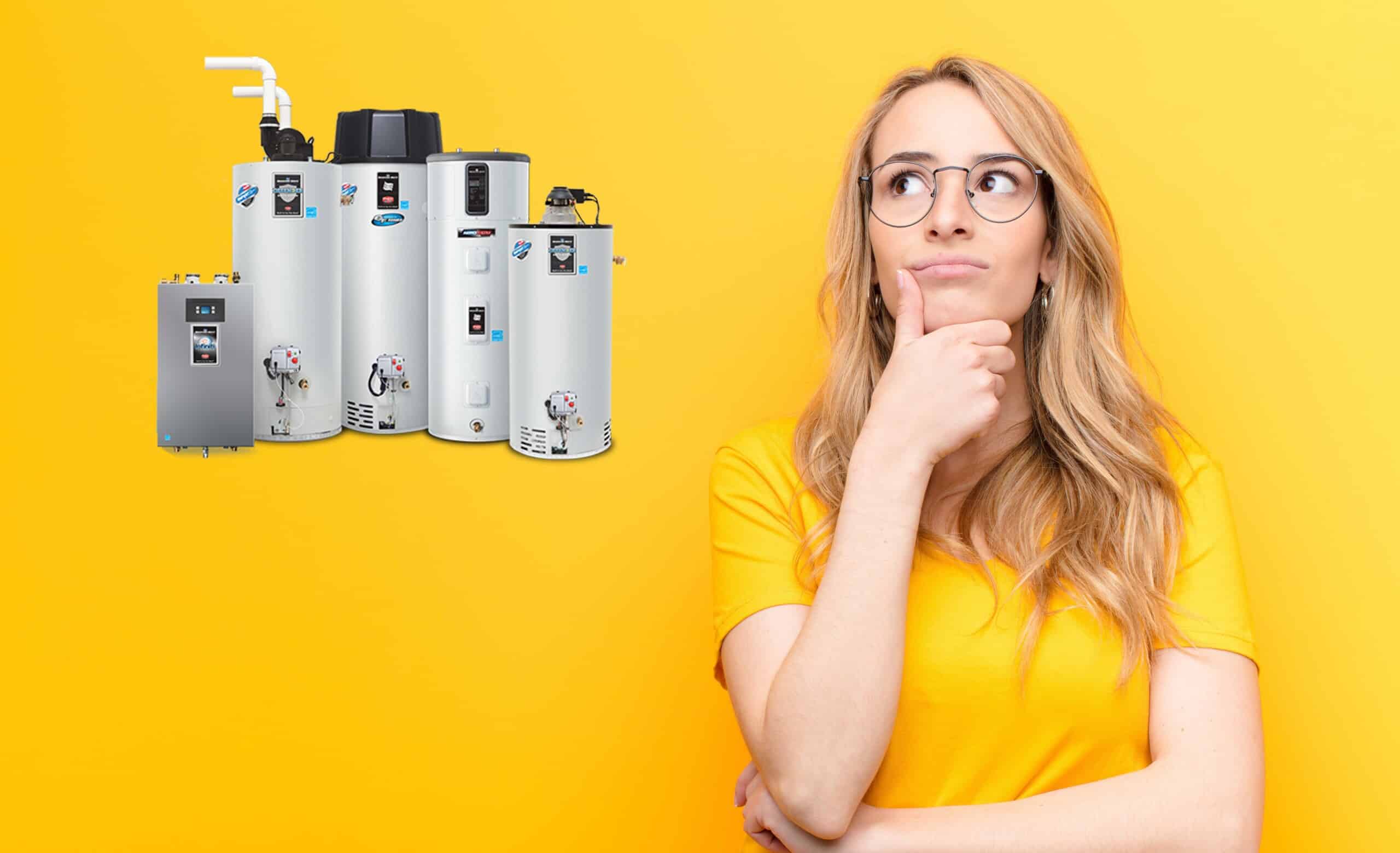What Size Water Heater Do I Need?

If you’ve made it here, chances are you have one question: “What size water heater do I need?”
Maybe your current hot water system broke down and you’re looking for a new water heater, or maybe you’re building a new home and you want the best possible water heating option for you and your family members. Either way, having an appropriately sized water heater for your space is crucial to your home’s overall energy efficiency as well as to ensure that you have enough hot water to support your home.
An improperly sized hot water heater is less sustainable, it can cost you more money on your energy bill in the long run and it most likely will not satisfy your home’s hot water needs. In fact, a properly sized water heater is so crucial, the United States Department of Energy has its own water heater sizing how-to on its website. Check it out for more information, as well as some helpful visual guides.
Tank Water Heaters
First up, we’ll learn how to determine the correct tank size for a traditional water heater or a storage water heater, including heat pump water heaters that also utilize a storage tank. Start by using the water heater’s first hour rating or FHR. A water heater’s FHR is the number of gallons of hot water the heater can supply per hour when already starting with a tank full of hot water. This rating takes into account the tank’s capacity, the type of heat source and the size of heat source.
To find your tank’s FHR, locate the bright yellow and black EnergyGuide label on the outside of the water heater. The EnergyGuide label lists the FHR in the top left corner as “Capacity (first hour rating).” According to the US Department of Energy, the Federal Trade Commission requires an EnergyGuide label to be included on all new, conventional storage water heaters, but not on heat pump water heaters. If you can’t find the FHR on your water heater, a product manual or any type of manufacturer information should also supply the unit’s FHR.
Next, you will need to determine your home’s peak hour demand, which leads us to another question: what is a peak hour demand and how do we determine it? First, the peak hour demand is the daily peak of hot water that is needed during a one-hour period to support your home’s hot water appliances.
Second, you can estimate the peak hour demand by determining what you do that uses hot water, what hour of the day you most often do these activities and how many people are participating. Keep in mind that:
- Bathing or showering = 20 gallons of water per person
- Washing hands = 2 gallons of water per person
- Washing dishes by hand = 6 gallons of water
- Shaving = 3 gallons of water per person
- Running the dishwasher = 14 gallons of water
- Using a washing machine for clothes = 30 gallons of water
You want a hot water tank with an FHR that meets or exceeds the number of gallons of hot water needed during your home’s peak hour demand. For more help on determining your peak hour demand and FHR, refer to this sheet from the US Department of Energy:

If math isn’t your thing, this estimation from Bob Vila shows the approximate tank capacity needed for a home based on the number of people who will be using it:
- 1 or 2 people = 3 to 36 gallons
- 2 to 4 people = 36 to 46 gallons
- 3 to 5 people = 46 to 56 gallons
- 5 or more people = over 56 gallons (add 10 gallons per additional person)
This list is just that, an estimate. Remember at any point during this process, if you are having trouble determining how much hot water your home needs or any other information, contact a licensed plumber for assistance.
Tankless Water Heaters
Next, let’s talk tankless. To determine the right size tankless water heater for your home, you need to estimate the maximum temperature rise that is possible at a given flow rate. First, we’re again going to utilize the idea of “peak hot water usage”. Determine when during the day you use the most hot water and what fixtures or appliances you’re using at this time.
Use this list of general flow rates in gallons per minute (gpm) from our friends at Bob Vila to calculate the maximum amount of hot water you would use at once depending on which activities are conducted during your peak hot water usage time:
- Sink faucet = 1 gpm
- Bathtub = 3 gpm
- Shower = 2.5 gpm
- Dishwasher = 3 gpm
- Washing machine = 3 gpm
After that, determine the temperature of the water entering your house by turning on a cold water faucet, letting it run for a few minutes and then using a thermometer to take the temperature of the water. This number will vary by climate.
Subtract the incoming water temperature from 110 degrees Fahrenheit (the average household hot water temperature) or any desired output temperature to determine the required temperature rise (how much the water would need to be heated to meet the desired output temperature).
Use the temperature rise along with your previously calculated necessary gallons per minute to determine what size of tankless water heater you need for your home. With these numbers in mind, most manufacturers have charts that will show you which heater will meet your household needs. For a visualization of this process, check out this helpful video from SupplyHouse.
In conclusion, determining what size water tank you need for your home can be challenging. We hope this step-by-step guide allows you to take some of the process into your own hands as a homeowner, as well as have a more energy-efficient home with lower utility bills.
If you don’t want to or you don’t feel comfortable figuring out what size water heater you need, or even if you get stuck along the way, don’t worry! Contact a professional plumber to quickly and confidently help you figure out what size water heater will be best for your home.
